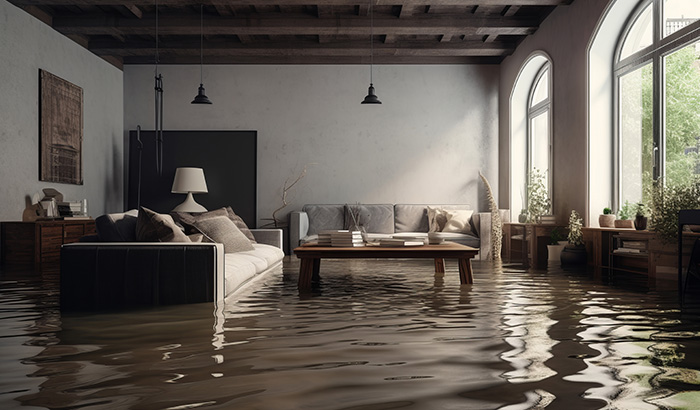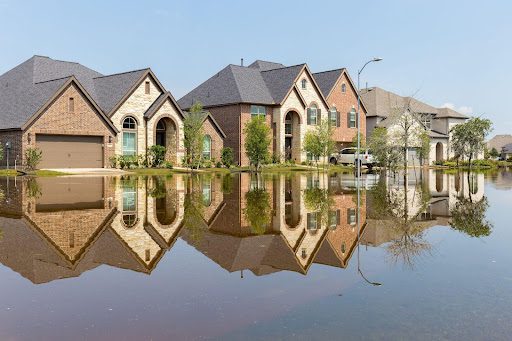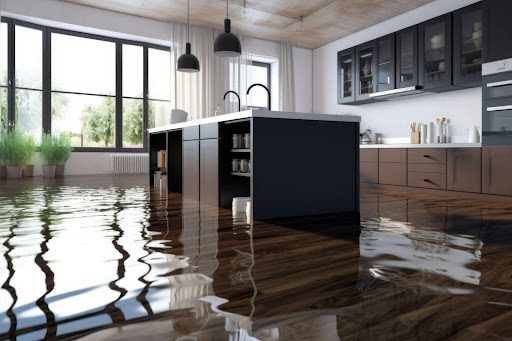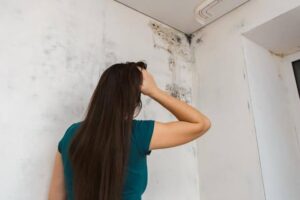There is a distinct peace of mind that comes with knowing your home and investment are secure, even in the face of devastating floods. Understanding flood damage coverage is crucial for homeowners because it’s the key to protecting your property from the potentially catastrophic consequences of flooding.
Your home, a significant financial investment, demands protection. Flood damage coverage, a specialized insurance type, shields you from the financial consequences of flood-related disasters, potentially determining whether you can rebuild your home or shoulder the entire recovery cost.
Standard homeowners’ insurance typically excludes flood coverage. Consequently, securing flood insurance becomes a proactive step, especially for properties in flood-prone areas where the risk is elevated.
This guide provides comprehensive insights into flood insurance, equipping you with the knowledge to make informed coverage decisions whether you reside in a flood-prone region or simply wish to safeguard your home and belongings from the unexpected.
Understanding Flood Damage
Flood damage occurs when an overflow of water covers land that is typically dry. This overflow can result from various factors such as heavy rainfall, storm surges, snowmelt, or dam failures. When these events lead to water entering homes and properties, it can cause substantial harm.
Water, especially when carrying sediment and debris, can seep into structures, weakening walls and foundations. It can also harm electrical and HVAC systems, rendering them unsafe or non-functional.
Floodwaters create an environment conducive to mold growth, which not only poses health risks but also demands costly cleanup efforts. Beyond the structural damage, floodwaters can ruin personal possessions, family heirlooms, and the overall habitability of your home.
Appreciating the extent of flood damage highlights the critical role of proper insurance coverage. With the right insurance in place, you can significantly alleviate the financial burden associated with recovering from such disasters.
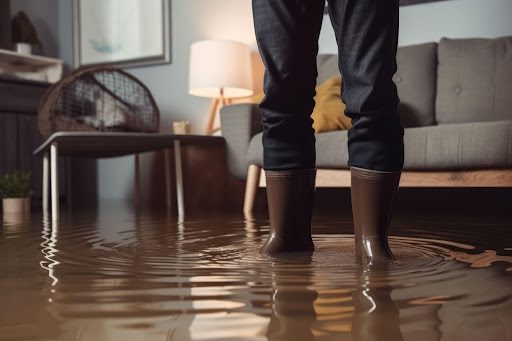
Types of Insurance Coverage
It’s important to know that standard homeowners’ insurance has limitations when it comes to flood damage. Typically, homeowner’s insurance doesn’t cover losses caused by flooding. This means that if a flood damages your home, your homeowners’ insurance policy won’t provide the financial assistance you need.
To ensure comprehensive protection, especially if you live in an area prone to floods, you’ll need to explore flood insurance options.
Flood Insurance Specifics
Flood insurance is a specialized policy designed specifically to cover damage caused by floods. It’s a separate policy from your homeowners’ insurance and is crucial in protecting your home in flood-prone regions.
This specific type of insurance provides coverage for both your home’s structure and its contents. In the event of a flood, this type of insurance can help with repairing or rebuilding your home and replacing any damaged belongings.
Government-backed vs. Private Flood Insurance
Flood insurance is available through government-backed programs as well as private insurance providers. The National Flood Insurance Program (NFIP) is a government-backed initiative that offers flood insurance policies.
Alternatively, you can choose to go with private flood insurance offered by various insurance companies. While both options provide flood coverage, they may differ in terms of pricing, coverage limits, and policy specifics.
It’s advisable to explore these differences and consult with insurance professionals to make an informed decision that aligns with your specific needs and circumstances.
Factors Affecting Coverage
Flood insurance coverage isn’t one-size-fits-all; it depends on several key factors that influence your policy. Here are some of those factors to consider:
The Role of Flood Zones
Your home’s location is a crucial factor in flood insurance. FEMA designates flood zones to categorize areas based on their flood risk.
High-risk zones, also known as Special Flood Hazard Areas (SFHAs), often require flood insurance as a mandatory requirement. In contrast, homes in lower-risk zones may not face the same mandate.
Understanding your property’s flood zone designation is essential, as it determines the necessity for insurance.
The Nitty-Gritty of Policy Terms
Flood insurance policies come with specific terms, limits, and deductibles.
- Policy terms outline how long and under what conditions your coverage applies.
- Coverage limits set the maximum amounts your policy will pay for property and contents damage.
- Deductibles represent your out-of-pocket expenses before insurance coverage kicks in.
Scrutinizing these details ensures you have the right coverage and know what to expect when filing a claim.
The Impact of Home Elevation and Mitigation
Taking proactive measures to mitigate flood risks can significantly affect your flood insurance premiums. Elevating your home above the base flood elevation reduces flood risk and can lead to lower insurance costs.
Installing flood mitigation measures like flood vents, barriers, and sump pumps can make your property less susceptible to flood damage, potentially resulting in more affordable premiums.
Engaging with a flood insurance provider allows you to explore how these measures can benefit your unique situation, potentially reducing your insurance expenses.
Making an Insurance Claim After a Flood
Filing a flood damage insurance claim can be overwhelming, but understanding the process can be immensely helpful during this challenging time.
First and foremost, prioritize safety for yourself and your family. Ensure you wait until authorities declare the area safe before entering if flooding is still occurring or if structural damage is present.
Promptly contact your insurance provider, reporting the flood damage as soon as possible. Provide your policy number and detailed damage information. Document the damage extensively with photographs and videos, capturing affected areas and damaged contents. These visual records are crucial when submitting your claim.
Your insurance policy may require you to take reasonable steps to prevent further property damage, including temporary repairs or securing the premises.
Maintain comprehensive records of every interaction you have with your insurance company, which includes recording the names of the representatives you speak with and meticulously noting down the dates of these conversations. This thorough documentation serves as a vital resource, helping you keep track of the progress of your claim, ensuring clear communication, and providing a reliable reference point should any questions or issues arise throughout the claims process.
The claims process typically involves several steps. Begin by submitting your claim with all necessary documentation. An adjuster from your insurance company will assess damage, validate your claim, and estimate repair costs.
After approval, you will receive compensation based on your policy coverage and the adjuster’s assessment. Your insurance company will then provide funds for repairs or property replacement.
To ensure a successful claim, thorough documentation is crucial.
- Take photographs and videos from various angles, including images of affected areas, structural damage, and damaged items.
- Create detailed lists of damaged items, specifying their value, age, and pre-flood condition.
- Keep records of expenses related to damage mitigation and repairs, including contractor estimates.
- Maintain a log of all interactions with your insurance company, including phone calls, emails, and letters.
- Keep a readily available copy of your insurance policy for quick reference during the claims process.
By following these steps and maintaining meticulous records, you can navigate the flood damage insurance claims process effectively, ensuring you receive the necessary support for recovery from the flooding challenges.
Preparing for Future Floods
To keep your home safe from future floods, it’s important to take some proactive steps. If you live in an area prone to flooding, consider raising your home to reduce the risk. This could mean lifting the whole house or important parts like electrical systems.
Another good idea is installing flood vents. These vents let water flow through your foundation, which eases the pressure on your walls and prevents structural damage during floods.
To protect your utilities, make sure things like electrical panels, HVAC systems, and utility connections are higher than potential flood levels. This helps prevent damage and keeps restoration costs down.
Seal your foundation walls properly with waterproof coatings or sealants to stop water from getting in. This creates a strong barrier against flooding.
Lastly, you can change how the land slopes around your home to direct water away from the foundation. You can use things like swales, berms, or French drains to help manage excess water. These steps can go a long way in keeping your home safe from floods.
Keeping up with your flood insurance coverage is super important to protect your home and stuff from future floods. It’s not just for flood seasons; it’s an all-year-round safety net. Make sure you review and update your flood insurance policy regularly. This way, it stays up-to-date with your property’s value and what it covers.
If anything changes, like your property’s value or the things you have, be sure to update your policy to match. That way, if a flood happens, your policy will have your back, and you’ll have the money you need to bounce back.
Another smart move is to create a flood emergency plan. Start by putting together an emergency kit with things like non-perishable food, water, first-aid stuff, flashlights, batteries, and your important documents. Make a family evacuation plan with spots to meet up and routes to follow. Practice it with your family so everyone knows the drill.
Put together a list of important contacts, like local authorities and emergency services, and share it with your family. Keep your essential documents safe by storing them in waterproof containers or as digital copies.
Keep an eye on the weather by checking forecasts and flood warnings. You might even want to get a NOAA Weather Radio or sign up for weather alerts to stay in the loop. To protect your home, you can use things like sandbags or flood shields to block water from getting in through doors and windows.
Need Help After a Flood? Call Total Flood & Fire Restoration
When it comes to safeguarding your home from flood damage and ensuring a smooth recovery process, it’s wise to have a reliable partner by your side. Total Flood and Fire Restoration can be that trusted ally.
Total Flood and Fire Restoration is a trusted name in disaster restoration, offering expertise, transparency, and dedication to your well-being. Our team is equipped to handle flood-related challenges and help you recover swiftly.
Total Flood and Fire Restoration stands as your reliable partner when disaster strikes. Reach out to us today and ensure your home is ready to weather any storm.

